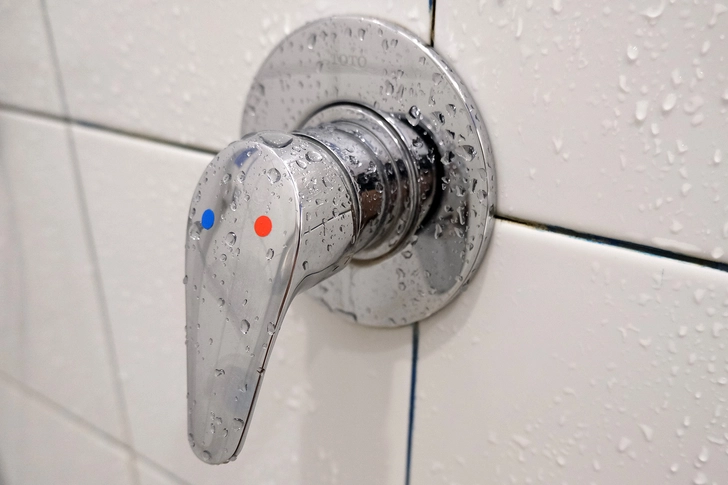- Overview
- Types
- Symptoms
- Causes & Risks
- Tests & Diagnosis
- Treatment
- Living With
- Mobility & Assistive Devices
- Complications
- Caregiving & Support
- Appointment Prep
- View Full Guide
Practical Tips and Products to Make Showering Safer and Less Tiring



Living with nonrelapsing secondary progressive multiple sclerosis means managing symptoms including fatigue, dizziness, numbness, weakness, muscle stiffness, and vision problems. All of these can make it exhausting and even dangerous to do everyday activities most people take for granted, like showering. But with some helpful products and strategies, you can enjoy safer and more relaxing showers.

Strategic Scheduling
If there’s a time of day when you have more energy and fewer symptoms, plan to shower then. Some people prefer to do it in the evening, so if they’re wiped out afterward they can just go to bed. How often you bathe is a personal choice. Two or three showers a week, with spot cleaning in between, may work best for you.

Nonslip Surfaces
Falls in the bathroom are a big concern for anyone who’s unsteady. If your tub or shower floor doesn’t have a nonslip coating, make it safer with textured decals or a skid-resistant mat held in place with suction cups. You can also wear nonslip shower shoes. And don’t forget the rest of the bathroom floor. Choose a low-profile bath rug with a rubberized backing to avoid trips and slips.

Grab Bars
These are a great tool to help you get in and out of the shower safely. You can also use them to steady yourself if you get dizzy while you’re showering or to keep your balance when you bend over to rinse your hair or wash your feet. You can find bars that attach to the shower tile with suction cups, but it’s safer to invest in the kind that are mounted with screws and less likely to come loose.

Shower Seats and Shower Transfers
Products that allow you to shower without having to stand range from inexpensive portable shower seats, to chairs that attach to the shower wall and fold up when you don’t need them, to built-in benches.
If you have a tub/shower combo, a transfer seat or bench lets you sit first, then swing your legs over the edge of the tub instead of stepping in. They even make motorized lifts to help you get into the tub.

Other Bathing Aids
More products made to help you get clean more easily include:
- Handheld shower head
- Long-handled scrub brush or sponge
- Wall-mounted, pump-top shampoo and bath gel containers
- Mesh pouch or hollow sponge to hold bar soap
- Shower caddy or shelf to keep items handy
- Foot-scrubber pad that sticks to the shower floor
- Easy-to-operate faucet knobs
- Shampoo basin or tray for washing hair in bed or at the sink
- Super absorbent towels for faster hair drying

Handling the Heat
Many people with MS are sensitive to changes in temperature. Heat in particular can make your symptoms worse, at least until you cool down. When you shower, keep it as short as possible and use lukewarm water. Run an exhaust fan or leave the bathroom door open to keep steam from building up. But be careful about going too cold. While a cool shower may be recommended when you’re overheated, cold water could cause your muscles to stiffen.

Shower Alternatives
Nobody says you have to shower every day. On days you aren’t up to it, it’s OK to prioritize your rest. Just washing your face or taking a washcloth to specific areas may be enough to feel fresh. There are many personal care products you can try that will help you keep clean without showering, including:
- Dry shampoo
- Disposable cleaning cloths
- No-rinse shampoo and body wash

Helping Hands
Giving up some of your independence is tough. But sometimes the safest option is to ask for help. See if your partner or a family member can give you a hand getting in and out of the shower or washing your hair.
If your budget and schedule allow, consider calling on the professionals. A weekly trip to the hair stylist for a wash and blow-dry or to the nail salon for a pedicure can keep you safe and make you feel pampered.
IMAGES PROVIDED BY:
!) Moment/Getty Images
2) Moment/Getty Images
3) iStock/Getty Images
4) EyeEm/Getty Images
5) Moment/Getty Images
6) iStock/Getty Images
7) iStock/Getty Images
8) iStock/Getty Images
9) E+/Getty Images
SOURCES:
National Institute of Neurological Disorders and Stroke: “Multiple Sclerosis.”
National Multiple Sclerosis Society: “Multiple Sclerosis Symptoms,” “Heat Sensitivity With Multiple Sclerosis.”
Versus Arthritis: “Living with arthritis: Tips for bathing, showering, using the toilet and navigating the bathroom.”
Harvard Health Publishing: “Showering daily -- is it necessary?”
MS Canada: “Daily Living.”
Parkinson’s Foundation: “Bathing & Grooming.”
Elder: “Bath aids for elderly – finding the right solution for your needs.”
University of North Carolina at Chapel Hill Cecil G. Sheps Center for Health Services Research: “Bathing Without a Battle.”
Muscular Dystrophy Association: “Easy Clean: Bathing Products for People with Disabilities.”
U.S. Department of Veterans Affairs: “Keep Cool: Multiple Sclerosis and Heat Tolerance.”
Alberta Health Services: “Other ways multiple sclerosis (MS) fatigue can impact daily living.”
MS Society: “Too hot, too cold: the science behind temperature and MS.”